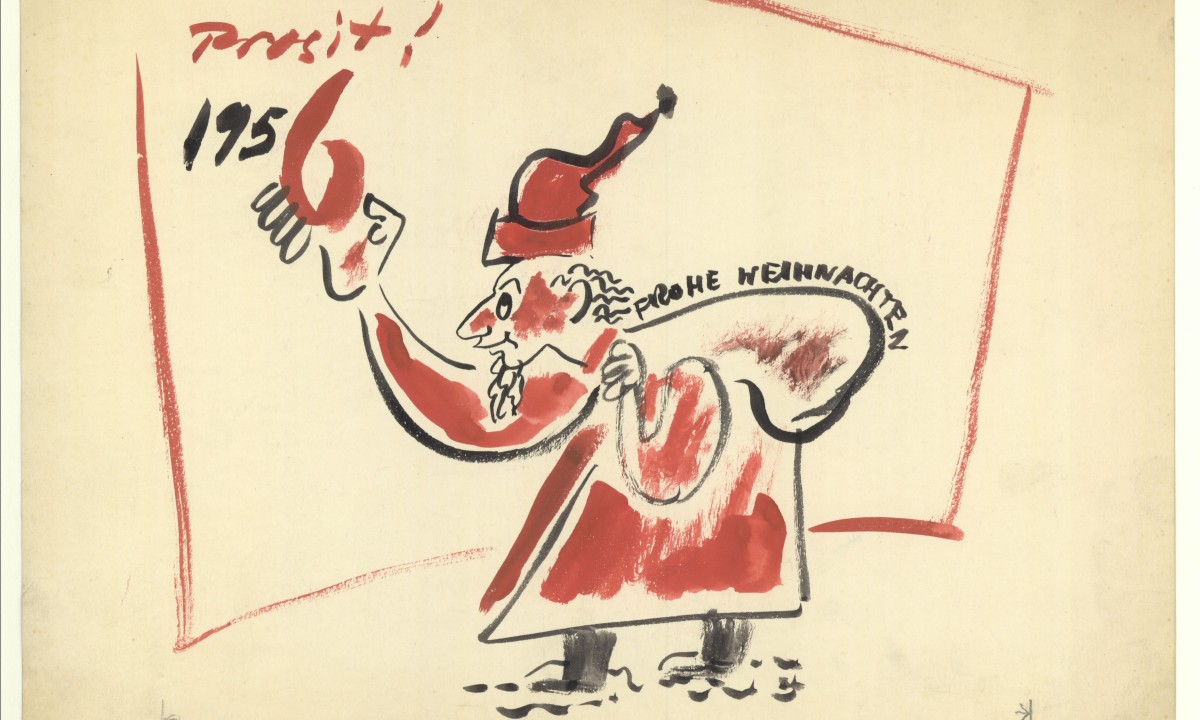Would you think that the term “Christmas” even appears in the inventory system of a Jewish museum when Jewish women and men all over the world celebrate Hanukkah – this year from November 28th to December 6th?
The search term “Christmas” in the object database of our museum yields 36 hits. Among a quantity of around 30,000 inventoried objects, that makes up very small number. But this is precisely the reason why it is worth placing some of these Christmas objects in the spotlight:
“Darling Elizabeth – this is to wish you all a Merry Christmas – a Happy New Year. I hope with all my heart that 1948 will be your lucky year, will see the end of all your worries. – I am sending you a smiling picture, for a change, on which you will note that Freddie is not wearing a coat although it was taken on what for Mexico was a cold winter day. – Our fondest love to you all. Your very loving Giselda (Don’t write back saying that I look old. Love Alfredo)”
22. December 2021
Celebrate
Christmas in the archive
by Hannah Landsmann
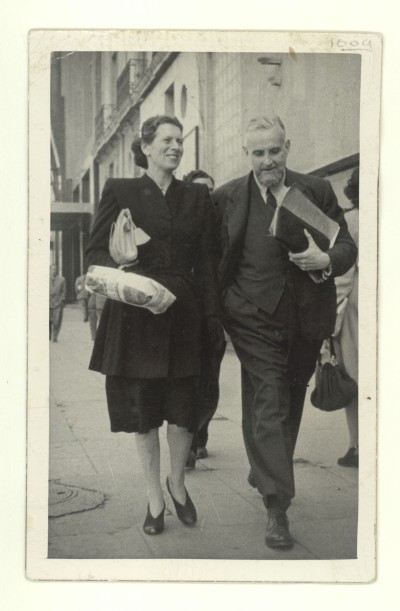
© Jüdisches Museum Wien
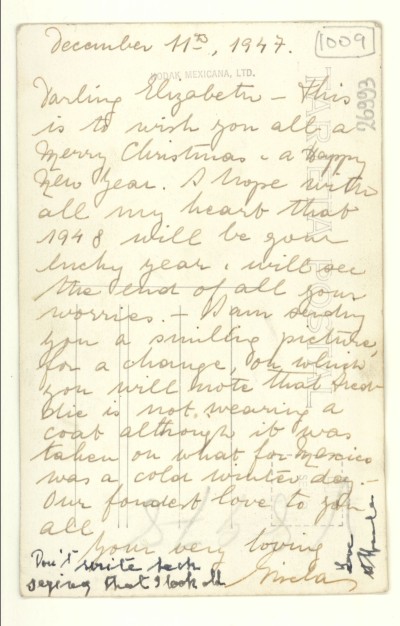
© Jüdisches Museum Wien
This photograph, on the reverse side of which the text quoted above can be read, is currently in the exhibition on the famous Ephrussi family and the perhaps even more famous hare at The Jewish Museum in New York. Gisela, Viktor and Emmy’s second daughter, who married Alfredo at the Vienna Stadttempel in 1920, fled with her family to Spain and South America, while Elisabeth found a new home in England. Her father Viktor, who had been expelled from Vienna, died there in March 1945 without ever having returned home. Elisabeth is the grandmother of Edmund de Waal, who together with his father Viktor de Waal, a high dignitary of the Anglican Church, donated part of the family archive to the Jewish Museum Vienna in 2017. The famous hare is a Japanese netsuke loaned to the museum along with 157 other objects of its kind for ten years. The lawyer Elisabeth de Waal fought for the return of the stolen goods, and in 1950 the Palais on Vienna’s Ringstrasse was restituted to the family.
Paul Peter Porges, perhaps better known to our visitors by his nickname and artist moniker PPP, appears in the permanent exhibition of the Jewish Museum, as well as in the current temporary exhibition Without a Home. Kindertransports from Vienna at Museum Judenplatz. The very friendly contact with the Porges family that has grown over the years has resulted in 488 donations to the museum collection, including a photograph of Jenny Porges, Paul Peter’s mother, from 1940. On the back she wrote: “Your mother // Weihnachten 1940 // Christmas 1940.” Paul Peter was rescued in 1939 on a Kindertransport to France. His parents Jenny and Gustav were deported to Theresienstadt in 1942 and liberated in 1945 to emigrate to the USA a year later. It was there that Paul Peter Porges, who had come to America via Switzerland, became a successful cartoonist who drew for Mad Magazine, The New Yorker and even Playboy. PPP died in Kingston, Jamaica in 2016.
Helena Rubinstein, the “inventor of beauty,” also came to America after she had turned her back on her hometown of Krakow and created smaller and larger universes of beauty in Melbourne, Vienna, Paris, London, New York and Tel Aviv. In the exhibition about the “pioneer of beauty,” which was on view at Museum Judenplatz from October 18, 2017 to May 6, 2018, we met a dynamic woman who could be considered likeable, peculiar and somewhat frightening at the same time. Not only did the woman from an Orthodox Jewish household send out “Seasons Greetings” for Christmas, she also did not turn down food that was not kosher, but too good to throw away. Madame. An Intimate Biography of Helena Rubinstein, published by her personal assistant Patrick O’Higgins, contains these and other stories.
Helena Rubinstein, the “inventor of beauty,” also came to America after she had turned her back on her hometown of Krakow and created smaller and larger universes of beauty in Melbourne, Vienna, Paris, London, New York and Tel Aviv. In the exhibition about the “pioneer of beauty,” which was on view at Museum Judenplatz from October 18, 2017 to May 6, 2018, we met a dynamic woman who could be considered likeable, peculiar and somewhat frightening at the same time. Not only did the woman from an Orthodox Jewish household send out “Seasons Greetings” for Christmas, she also did not turn down food that was not kosher, but too good to throw away. Madame. An Intimate Biography of Helena Rubinstein, published by her personal assistant Patrick O’Higgins, contains these and other stories.
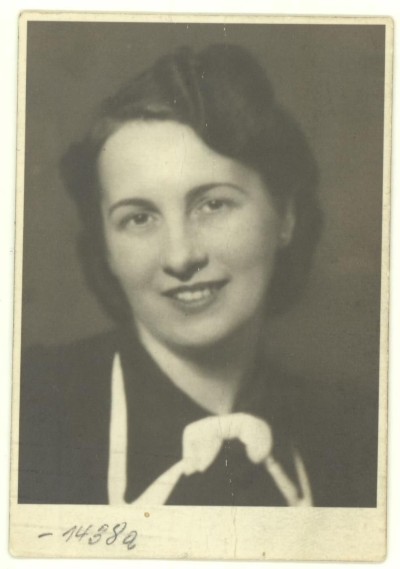
© Jüdisches Museum Wien
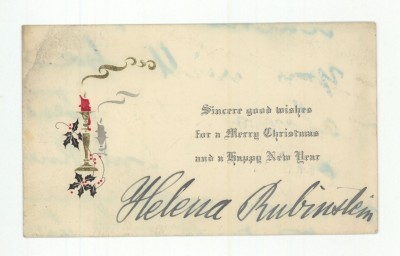
© Jüdisches Museum Wien
This greeting card from the 1930s was acquired along with other objects for the aforementioned exhibition at the Museum Judenplatz, which was also shown at the Museum of Jewish Art and History in Paris.
The most beautiful woman in Hollywood celebrated Christmas with her two children in 1952. Or at least pretended to, since many of these “home stories” were staged. What appears on the photograph was not how it really was, but how it was supposed to be or how one would have the public believe it to be. After the exhibition about Lady Bluetooth held at Museum Judenplatz from November 27, 2019 to December 25, 2020, the US Friends of the Jewish Museum Vienna purchased the estate of Hollywood actress and inventor Hedy Lamarr from Vienna. In addition to photos, personal letters, documents and items of clothing, Hedy Lamarr’s son Anthony Loder turned these memories of his mother over to Vienna again, the hometown she loved so much, to which she nonetheless – or perhaps solely for that reason – returned just for a visit.
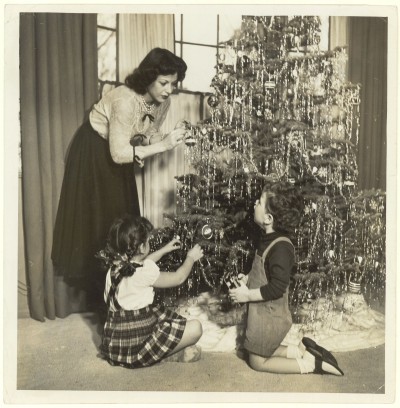
© Jüdisches Museum Wien
Heinrich and Anni Sussmann returned permanently to Vienna after the Second World War. Born in Tarnopol in 1904, the artist Heinrich moved to Vienna in 1914, where he studied with Oskar Strnad, among others. In 1929 he went to Berlin and came back to Vienna in 1933. After the “Anschluss” he fled via Prague and Zurich to France, where he joined the Résistance. Deported to the Auschwitz concentration camp in 1944, Heinrich and Anni Sussmann both survived. In 1945, he and his wife went back to Vienna, and from that point on the graphic artist dealt with the crimes of National Socialism and the Shoah in his artistic work. The Sussmann Collection comprises part of Heinrich Susmann’s artistic estate, which has been at the Jewish Museum since 1992 and is stored in the archive. The Anni and Heinrich Sussmann Foundation, founded in 1989, supports artists who are committed to the ideals of democracy and anti-fascism in accordance with Sussmann’s will.
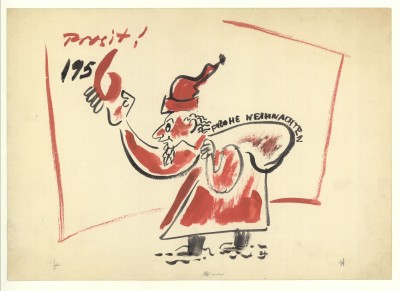
© Jüdisches Museum Wien
The fact that Heinrich Sussmann depicted himself as Santa Claus in 1956 may not fit into this picture, but it shows that some things are simply different from what you think. And that very different things sometimes go together. If you know “Ma’oz Tzur,” a traditional Hanukkah song, you may also know that it is sung to the tune of a fifteenth century hymn. There are always two sides to things. And most of them have even more.
Whatever you’re celebrating – we wish you happy holidays!
Whatever you’re celebrating – we wish you happy holidays!
